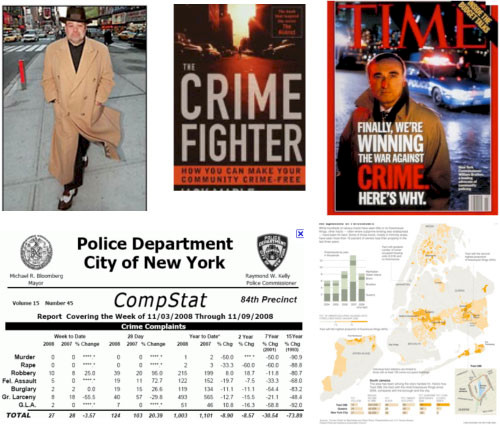Innovations in Environmental Synthesis, Reporting and Governance: Part 9 - Innovations in Governance
Bill Dennison ·The last thing I want to talk about is innovations in governance. This is a story I want to start in New York City, where there was a guy called Jack Maple. He always had a bow-tie and a bowler. He was a transit cop, policing the subways and buses in New York. He started putting pins on maps, to plot where crime was. He then started being seen as some guru, because he predicted Friday at 4 o clock, there was going to be a mugging at the Broadway Street subway station. He was predicting crime, they were catching people, and the crime rate dropped. Later William Bratton came along and became the chief of police in New York and he created CompStat. Now, basically every major city uses this kind of program for crime prevention. CompStat was the basis of evidence-based deployment of police in major cities.

Along comes a young Baltimore, Maryland mayor by the name of Martin O’Malley who said "We’ll start this program in Baltimore". Baltimore was one of those urban blight areas; they made TV shows and movies about the crime in Baltimore.And the crime rate dropped over forty percent just like that. Mayor O'Malley decided to use that system for everything he did for city government. So he created CitiStat. The city employee absentee rate dropped. He won lots of awards, got re-elected, and became a very popular guy. This system has spread too many other cities. The four principals of the 'stating' were 1) accurate and timely intelligence shared by all, 2) rapid deployment of resources, 3) effective tactics and strategies, and 4) relentless follow up and assessment. It actually became an interesting way to manage people for the city services that he was providing. And he always uses two data projectors, and projects the data in real time during the discussions. O'Malley then got elected Governor of Maryland, and created StateStat. He has specific measurable objectives, regular meetings, the managers are held responsible. Young people get promoted over seniority based on their ability to be functional in this stating environment. Stating uses data to access progress. Governor O'Malley looked at our report card and said, “Let’s create something unique.”

Before I tell you what O'Malley is doing with the Bay, let me tell you a little bit about the history of the Chesapeake Bay because this is the history of estuarine or coastal science in general. We spent about fifty years just looking at the science of the bay. What’s driving it? What are the physics, the chemistry, and the biology of the Bay? Then we go in and identify the problem in the Chesapeake (it was eutrophication). We spent fifteen years working out the eutrophication problem and then set up monitoring and modeling, spending fifteen years coordinating that. You still haven’t fixed anything, you are just doing the science. Then you start this accountability and you say, “Are our dollars going in the right place? Are we doing the right thing?” Then, hopefully, somewhere along the line you start actually doing something to improve the Bay.

This blog post was created from a presentation by Bill Dennison to the Terrestrial Ecosystem Research Network in Melbourne, Australia on 29 Mar, 2011 (full powerpoint presentation can be accessed on IAN Press.
About the author
Bill Dennison

Dr. Bill Dennison is a Professor of Marine Science and Vice President for Science Application at the University of Maryland Center for Environmental Science.